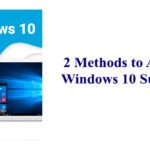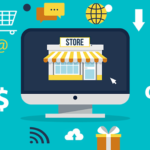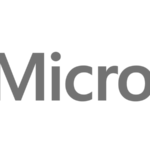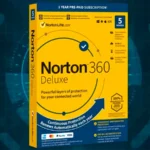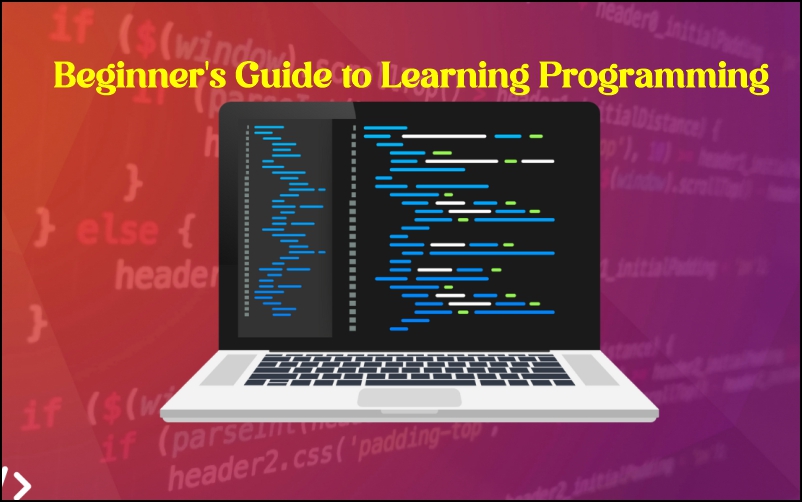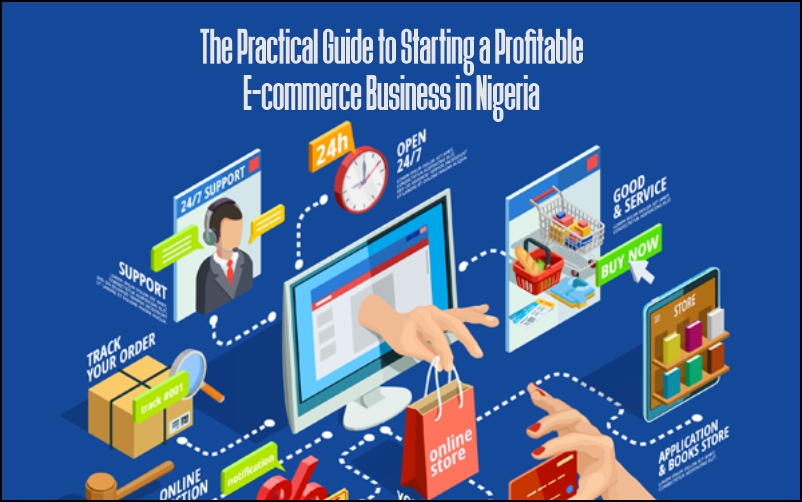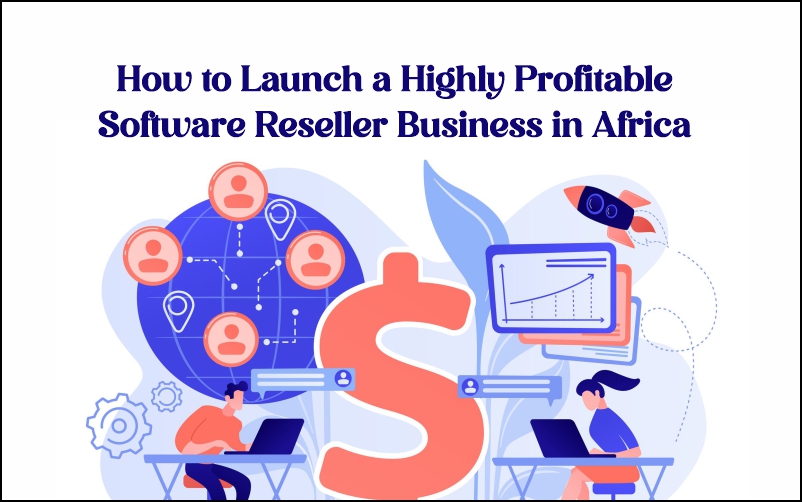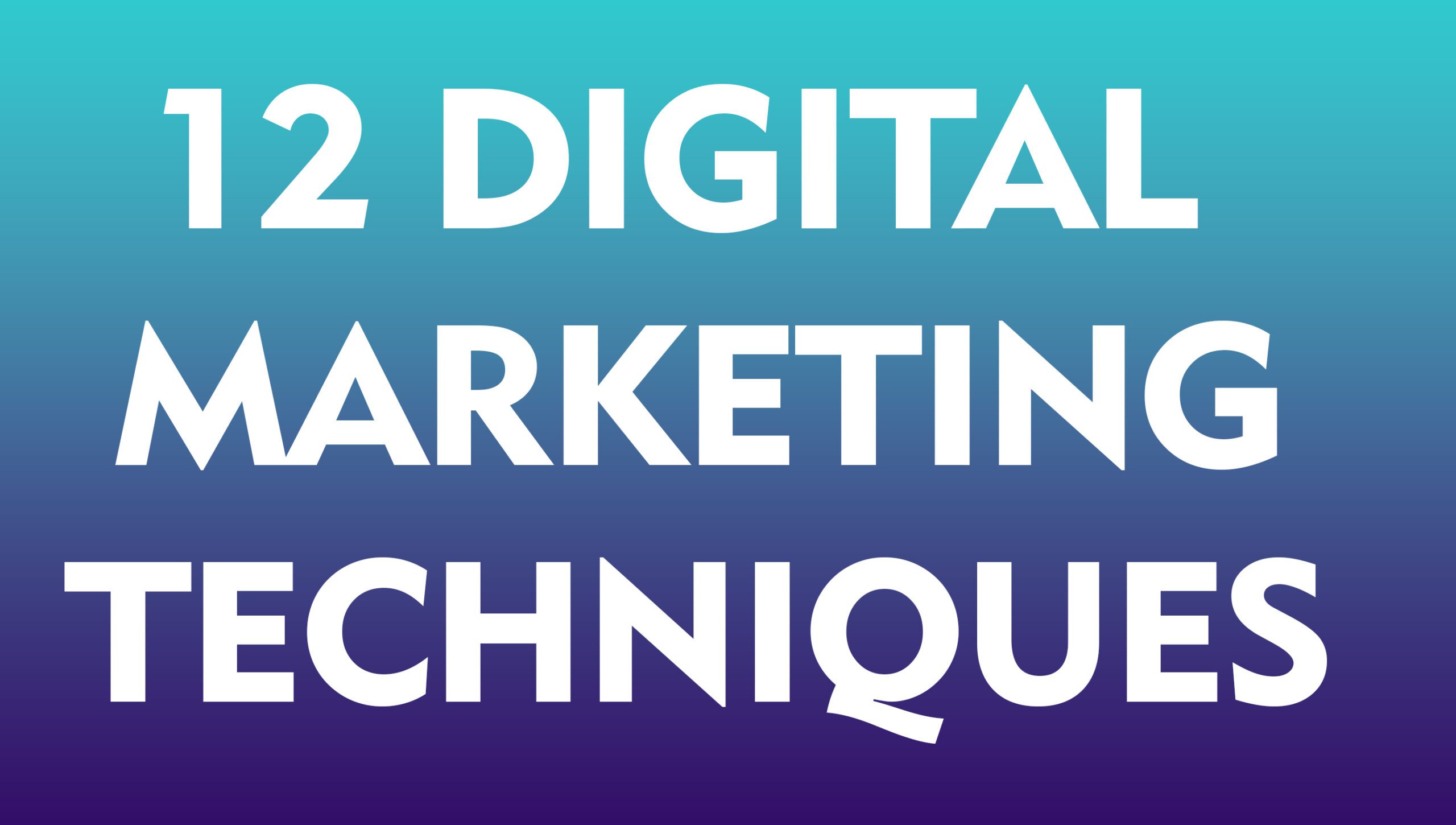
This article describes 12 digital marketing techniques.
In the ever-evolving landscape of digital marketing, staying ahead of the curve is paramount to success. As consumer behaviors shift, technology advances, and competition intensifies, marketers must continually adapt their strategies to remain relevant and effective. In this era of digitization, where the internet is the cornerstone of communication, commerce, and connection, mastering digital marketing techniques is not just an option – it’s a necessity.
From social media platforms to search engines, email campaigns to content creation, the arsenal of tools and techniques available to marketers is vast and diverse. However, navigating this digital labyrinth can be daunting, especially for those unfamiliar with its intricacies. That’s where this comprehensive guide comes in.
In this article, we delve into 12 digital marketing techniques that have proven to be instrumental in helping businesses thrive in the digital realm. Whether you’re a seasoned marketer looking to refine your approach or a newcomer seeking guidance, these techniques offer invaluable insights and strategies to elevate your digital marketing efforts.
From optimizing your website for search engines to harnessing the power of social media advertising, each technique serves as a building block in constructing a robust digital marketing strategy. We’ll explore how to leverage data analytics to make informed decisions, craft compelling content that resonates with your audience, and create seamless user experiences that drive engagement and conversions.
1. Email Marketing (Email Campaigns): Email marketing is a digital marketing technique that involves sending targeted messages to a group of individuals via email. It helps businesses engage with their audience, nurture leads, drive conversions, and build relationships. Key strategies include building an email list, segmenting subscribers, personalizing content, creating compelling emails, automating campaigns, testing and optimizing, and ensuring compliance with regulations.
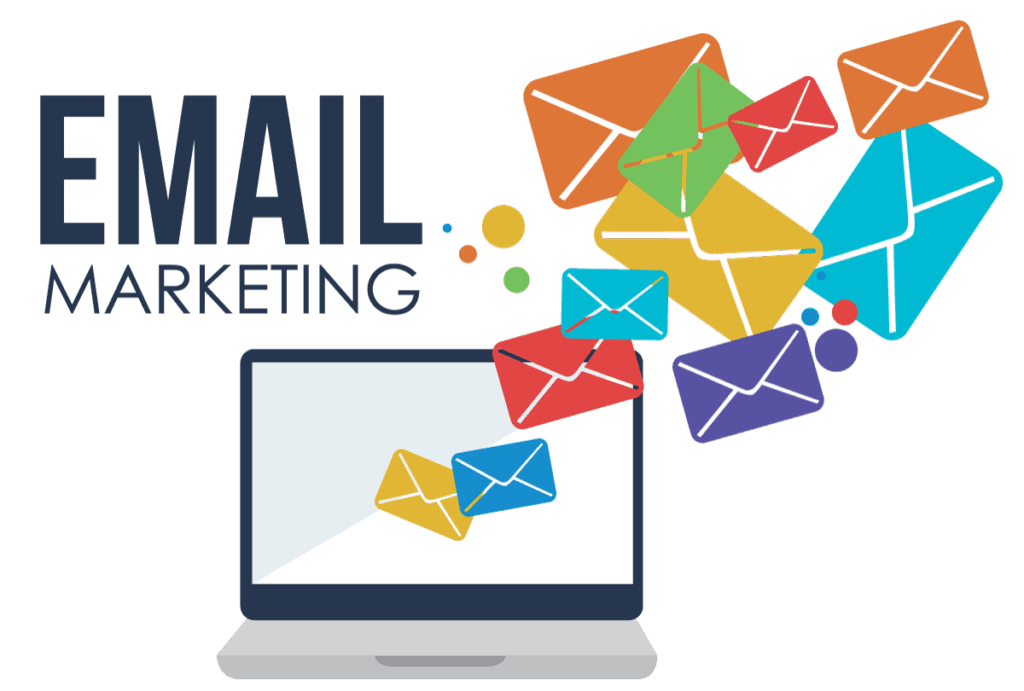
2. WhatsApp Marketing (WA Catalogue, WA Status, WA Biz):
WhatsApp Marketing involves leveraging the popular messaging platform WhatsApp to reach and engage with customers. There are several key features and techniques within WhatsApp that businesses can utilize:
WhatsApp Catalogue: This feature allows businesses to showcase their products or services within the WhatsApp app. Businesses can create a digital catalogue with images, descriptions, and prices, making it easier for customers to browse and inquire about products directly through WhatsApp.
WhatsApp Status: Similar to Stories on other social media platforms, WhatsApp Status allows users to share updates, photos, videos, and links with their contacts. Businesses can use this feature to share promotional content, behind-the-scenes glimpses, product demonstrations, or special offers to engage with their audience in a more informal and interactive manner.
WhatsApp Business (WhatsApp Biz): WhatsApp Business is a dedicated app designed specifically for small and medium-sized businesses. It offers features such as automated messages, quick replies, labels, and messaging statistics to streamline communication with customers. WhatsApp Business also provides a professional profile for businesses, allowing them to display important information such as business description, contact details, and operating hours.
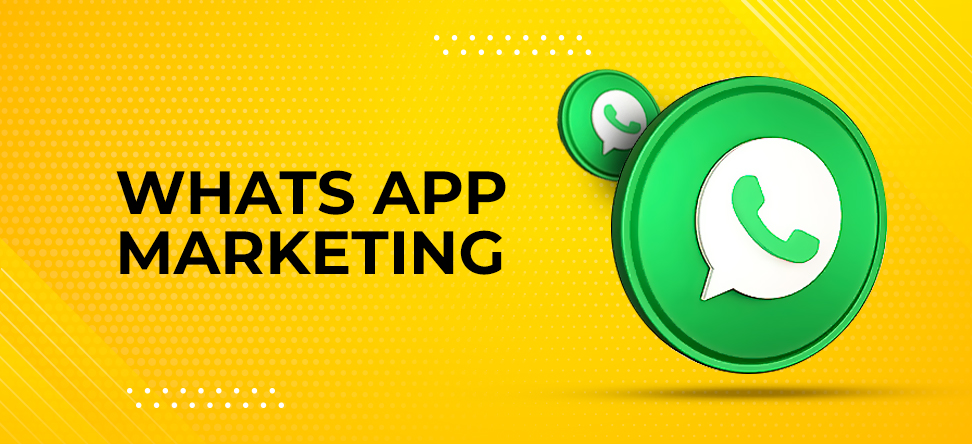
3. Social Media Marketing (Facebook, IG, Twitter, etc):Social Media Marketing (SMM) involves utilizing various social media platforms such as Facebook, Instagram, Twitter, LinkedIn, and others to connect with your audience, build brand awareness, drive website traffic, and generate leads or sales. Here’s a brief overview of how businesses can leverage these platforms effectively:
Facebook: With over 2 billion active users, Facebook offers a diverse range of marketing opportunities. Businesses can create a Facebook Page to establish a presence, share content, interact with followers, and run targeted advertising campaigns. Facebook’s advanced targeting options allow businesses to reach specific demographics based on interests, behaviors, and demographics.
Instagram: Instagram is a visual-centric platform that is particularly popular among younger demographics and those interested in lifestyle, fashion, and visual content. Businesses can use Instagram to showcase products or services through photos and videos, engage with followers through Stories, IGTV, and Reels, and run ads to reach their target audience.
Twitter: Twitter is known for its real-time nature and concise communication style. Businesses can use Twitter to share updates, news, promotions, and engage with customers through tweets, replies, and direct messages. Twitter also offers advertising options to promote tweets, profiles, or trends to a wider audience.
LinkedIn: LinkedIn is a professional networking platform primarily used for B2B marketing and career development. Businesses can utilize LinkedIn to establish thought leadership, share industry insights, network with other professionals, recruit talent, and advertise products or services to a professional audience.
YouTube: As the second largest search engine after Google, YouTube offers vast opportunities for video marketing. Businesses can create and share videos to educate, entertain, or promote their products or services. YouTube ads allow businesses to reach a wide audience and target users based on demographics, interests, and behavior.
TikTok: TikTok is a short-form video platform that has gained immense popularity among younger demographics. Businesses can create engaging and creative content to connect with Gen Z and millennial audiences, participate in trending challenges, and collaborate with influencers to reach a wider audience.
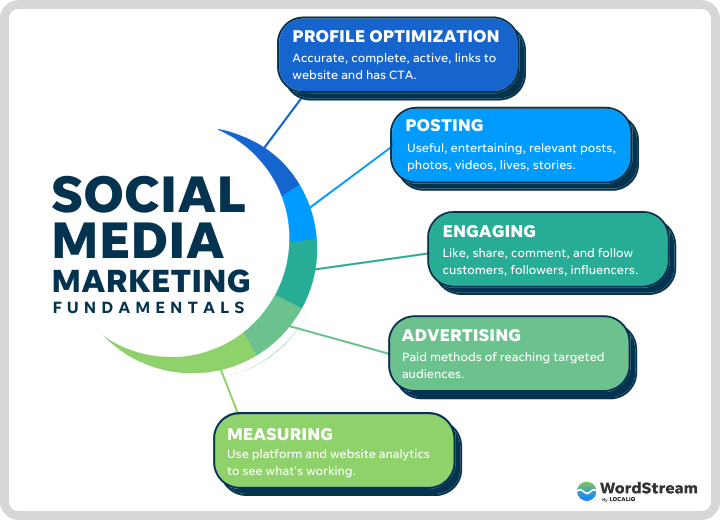
4. Paid Advertising (Facebook Ad, Google Ad, etc): Paid advertising involves paying to display advertisements on various platforms, such as Facebook Ads, Google Ads, and others, to reach a targeted audience and achieve specific marketing goals. Here’s a brief overview of how paid advertising works on two popular platforms:
1. Facebook Ads: With Facebook Ads, businesses can create targeted advertisements that appear in users’ Facebook feeds, Messenger, Instagram, and other partner networks. Advertisers can define their target audience based on demographics, interests, behaviors, and more. They can choose from various ad formats, including image ads, video ads, carousel ads, and slideshow ads, to showcase their products or services. Facebook Ads also offer advanced targeting options, retargeting capabilities, and detailed analytics to track ad performance and optimize campaigns for better results.
2. Google Ads: Google Ads (formerly known as Google AdWords) is an advertising platform that allows businesses to display ads on Google’s search engine results pages (SERPs), as well as on websites and apps within the Google Display Network. Advertisers bid on keywords relevant to their business, and their ads are displayed to users who search for those keywords or visit websites related to their products or services. Google Ads offers various ad formats, including text ads, display ads, video ads, and shopping ads. Advertisers can set their budget, target specific geographic locations, and track conversions using conversion tracking tools.
Paid advertising provides businesses with the opportunity to reach a larger audience, increase brand visibility, drive website traffic, and generate leads or sales. By targeting the right audience with relevant ad content, businesses can maximize their return on investment (ROI) and achieve their marketing objectives effectively. It’s essential to continuously monitor and optimize paid advertising campaigns to ensure they deliver the desired results and remain cost-effective.
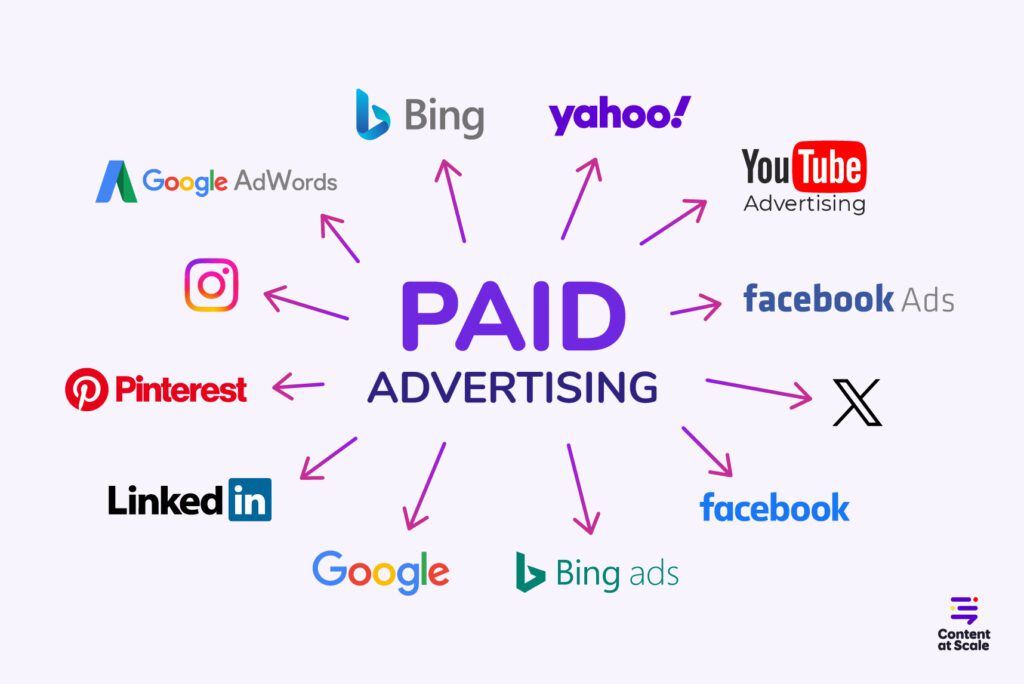
5. Influencer Marketing (YouTube, IG, etc): Influencer marketing involves collaborating with individuals who have a significant following and influence on social media platforms like YouTube, Instagram, TikTok, and others to promote products or services. Here’s a brief overview of how influencer marketing works:
Identifying Influencers: Businesses identify influencers whose audience demographics and interests align with their target market. Influencers can range from celebrities with millions of followers to micro-influencers with smaller but highly engaged audiences within niche communities.
Collaboration: Businesses reach out to influencers to propose collaboration opportunities. This may involve sponsored content, product reviews, giveaways, brand endorsements, or affiliate partnerships. The terms of the collaboration, including compensation, deliverables, and timeline, are negotiated between the brand and the influencer.
Content Creation: Influencers create content that showcases the brand’s products or services in an authentic and engaging way. This may include product demonstrations, unboxing videos, sponsored posts, or sponsored stories, depending on the platform and the preferences of the influencer and the brand.
Publishing and Promotion: Once the content is created, influencers publish it on their social media channels, reaching their audience of followers. They may also promote the content through paid advertising or cross-promotion on other platforms to maximize reach and engagement.
Measurement and Evaluation: Brands track key performance metrics such as reach, engagement, website traffic, and conversions to evaluate the effectiveness of the influencer marketing campaign. This allows them to assess the ROI and make informed decisions about future collaborations.
Influencer marketing allows businesses to leverage the trust, credibility, and authenticity of influencers to connect with their target audience in a more genuine and relatable way. By partnering with influencers who resonate with their brand values and audience demographics, businesses can increase brand awareness, drive engagement, and ultimately, generate leads or sales. It’s essential to choose influencers strategically, establish clear objectives and expectations, and maintain open communication throughout the collaboration process to ensure the success of influencer marketing campaigns.
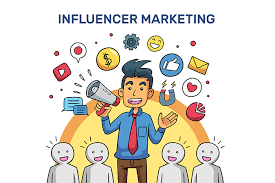
6. Content Marketing (Blogging, YouTube, etc): Content marketing is a strategic marketing approach focused on creating and distributing valuable, relevant, and consistent content to attract and engage a target audience. Here’s a brief overview of content marketing and its key components:
Blogging: Blogging involves creating written content in the form of articles, guides, tutorials, or opinion pieces to educate, inform, or entertain your audience. Blogs are typically hosted on a website and can cover a wide range of topics relevant to your industry, niche, or target audience’s interests.
YouTube: YouTube is a video-sharing platform where businesses can create and share video content to reach and engage their audience. YouTube content can include tutorials, product reviews, behind-the-scenes footage, vlogs, interviews, and more. Video content on YouTube allows businesses to showcase their expertise, demonstrate products or services, and connect with viewers in a visual and engaging way.
Social Media: Social media platforms like Facebook, Instagram, Twitter, LinkedIn, and TikTok are essential channels for content distribution in content marketing. Businesses can share blog posts, videos, infographics, images, and other types of content to engage with their audience, drive traffic to their website, and foster relationships with customers.
Podcasting: Podcasting involves creating audio content in the form of episodes or shows on specific topics related to your industry, niche, or audience interests. Podcasts allow businesses to share expertise, conduct interviews, discuss industry trends, and provide valuable insights to listeners.
Infographics: Infographics are visual representations of information, data, or knowledge presented in a concise and visually appealing format. They combine text, images, and graphics to communicate complex ideas or concepts quickly and effectively. Infographics are highly shareable and can help businesses attract attention, generate traffic, and increase brand awareness.
Ebooks and Guides: Ebooks and guides are long-form content pieces that provide in-depth information, insights, or resources on a specific topic. Businesses can offer ebooks and guides as downloadable assets in exchange for email sign-ups, lead generation, or as a value-added resource for their audience.
Content marketing aims to build trust, credibility, and authority with your audience by delivering valuable and relevant content that addresses their needs, interests, and pain points. By consistently producing high-quality content across various channels, businesses can attract and retain customers, drive engagement, and ultimately, achieve their marketing goals.

7. Video Marketing (YouTube, Facebook): Video marketing involves creating and distributing video content to promote products, services, or brands and engage with the target audience. Here’s a brief overview of video marketing and its key components:
YouTube: YouTube is the largest video-sharing platform globally, with over 2 billion logged-in monthly users. Businesses can create a YouTube channel to host and share their video content, including product demos, tutorials, behind-the-scenes footage, customer testimonials, and more. YouTube offers various features such as playlists, annotations, and end screens to organize and enhance the viewing experience. Additionally, businesses can leverage YouTube ads to reach a wider audience and promote their videos.
Facebook: Facebook is a popular social media platform that supports video content in various formats, including native videos, live streams, and stories. Businesses can upload videos directly to their Facebook Page or share them in users’ feeds to increase engagement and reach. Facebook’s algorithm prioritizes video content, making it an effective way to capture the attention of users scrolling through their feeds. Moreover, businesses can run video ads on Facebook to target specific demographics, interests, and behaviors and achieve specific marketing objectives.
Video marketing allows businesses to convey messages more effectively, capture attention, evoke emotions, and showcase products or services in a visually engaging way. By leveraging platforms like YouTube and Facebook to distribute video content, businesses can reach a broader audience, drive engagement, and ultimately, achieve their marketing goals. It’s essential to create high-quality, relevant, and compelling video content tailored to the preferences and interests of the target audience to maximize the impact of video marketing efforts.
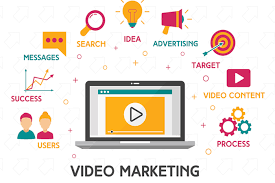
8. Affiliate Marketing (cj, ClickBank, selar, etc):
Affiliate marketing is a performance-based marketing strategy where businesses (merchants or advertisers) partner with individuals or other companies (affiliates or publishers) who promote their products or services in exchange for a commission on sales or other actions. Here’s a brief overview of how affiliate marketing works and some key platforms:
Partnership: Businesses join affiliate networks or programs, such as CJ Affiliate (formerly Commission Junction), ClickBank, ShareASale, or Selar, to connect with potential affiliates. These platforms act as intermediaries, facilitating partnerships between merchants and affiliates and tracking commissions and referrals.
Promotion: Affiliates choose products or services to promote from the merchant’s offerings and receive unique tracking links or affiliate codes. They then promote these products or services through various channels, such as websites, blogs, social media, email newsletters, or paid advertising.
Commission: When a customer clicks on an affiliate link or uses an affiliate code to make a purchase or perform a desired action (such as signing up for a trial or filling out a form), the affiliate earns a commission. The commission structure may vary depending on the affiliate program and can be based on a percentage of the sale amount, a fixed amount per sale, or other metrics.
Tracking and Reporting: Affiliate networks or platforms track clicks, conversions, and commissions generated by affiliates using advanced tracking technology. They provide affiliates with access to reporting tools and dashboards to monitor their performance, earnings, and campaign effectiveness in real-time.
Payment: Affiliates receive payments for their commissions according to the payment terms specified by the affiliate program. Payments may be issued on a monthly, bi-weekly, or other schedule, depending on the program. Some affiliate programs may have minimum payment thresholds that affiliates must reach before receiving payment.
Affiliate marketing offers benefits for both merchants and affiliates. Merchants can expand their reach, drive sales, and increase brand awareness by leveraging the marketing efforts of affiliates. Affiliates, on the other hand, can earn passive income by promoting products or services they believe in without the need to create their own products or handle customer support. Overall, affiliate marketing is a mutually beneficial partnership that can be highly lucrative when executed effectively.
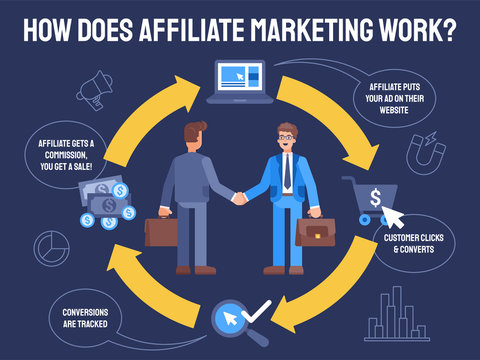
9. E-commerce (Selling on Online Stores): E-commerce, short for electronic commerce, is a digital marketing technique that refers to the buying and selling of goods or services over the internet. It encompasses a wide range of online transactions, from online retail stores to business-to-business (B2B) exchanges. Here’s a brief overview of e-commerce and how selling on online stores works:
1. Online Stores: E-commerce allows businesses to set up online stores or digital storefronts where customers can browse products, make purchases, and complete transactions entirely online. These online stores can be hosted on platforms like Shopify, WooCommerce, Magento, or custom-built websites.
2. Product Listings: Businesses list their products or services on their online store, providing detailed descriptions, images, prices, and other relevant information to help customers make informed purchasing decisions. Product listings may also include customer reviews, ratings, and recommendations to enhance trust and credibility.
3. Shopping Cart and Checkout: Customers add desired items to their virtual shopping cart and proceed to the checkout process. During checkout, customers provide billing and shipping information and choose their preferred payment method, such as credit/debit cards, PayPal, Apple Pay, or other online payment gateways.
4. Payment Processing: Once the order is placed, the e-commerce platform securely processes the payment, encrypting sensitive information to protect customer data. Payment gateways facilitate transactions between the customer’s bank and the merchant’s bank, ensuring the funds are transferred securely and efficiently.
5. Order Fulfillment: After receiving an order, the business fulfills it by picking, packing, and shipping the products to the customer’s designated address. Some businesses handle fulfillment in-house, while others may outsource it to third-party logistics providers (3PLs) or utilize dropshipping services.
6. Customer Service: Providing excellent customer service is essential in e-commerce. Businesses must address customer inquiries, concerns, and issues promptly and professionally through various channels, such as email, live chat, phone support, or social media.
7. Post-Purchase Experience: E-commerce businesses focus on delivering a positive post-purchase experience to encourage customer loyalty and repeat purchases. This may involve sending order confirmations, shipping notifications, delivery updates, and requesting feedback or reviews to gather customer insights and improve the overall shopping experience.
E-commerce has transformed the way businesses operate and consumers shop, offering convenience, accessibility, and a vast selection of products and services at their fingertips. By leveraging e-commerce platforms and implementing effective marketing and customer service strategies, businesses can tap into the lucrative online market and drive growth and success in the digital age.
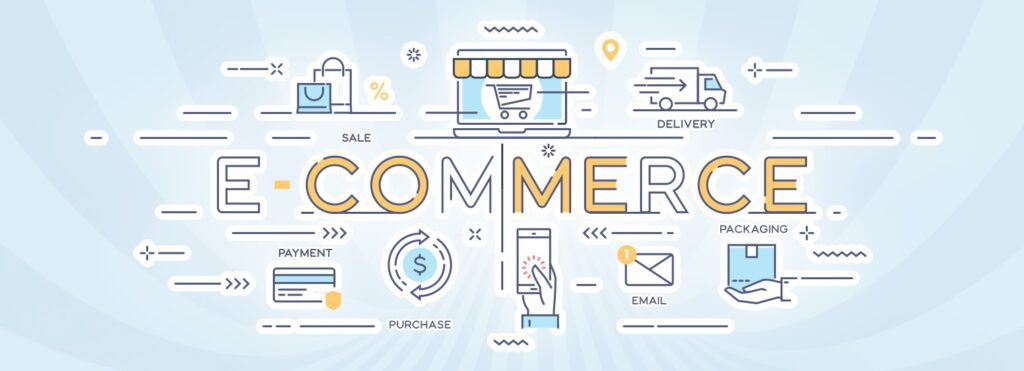
10. Search Engine Marketing (Google Ad, Bing Ad): Search Engine Marketing (SEM) is a digital marketing strategy that involves promoting websites by increasing their visibility in search engine results pages (SERPs) through paid advertising. Here’s a brief overview of SEM and how platforms like Google Ads and Bing Ads work:
1. Google Ads (formerly Google AdWords): Google Ads is Google’s advertising platform that allows businesses to create and display ads on Google’s search engine results pages (SERPs) and other Google properties, including YouTube, Gmail, and the Google Display Network. Businesses bid on keywords relevant to their products or services, and their ads are displayed to users who search for those keywords. Google Ads operates on a pay-per-click (PPC) model, where advertisers only pay when users click on their ads. Advertisers can set budgets, target specific geographic locations, demographics, interests, and behaviors, and track conversions using Google’s analytics tools.
2. Bing Ads (now Microsoft Advertising): Bing Ads, now known as Microsoft Advertising, is Microsoft’s advertising platform that enables businesses to display ads on Bing, Yahoo, and other partner websites. Bing Ads operates similarly to Google Ads, allowing advertisers to bid on keywords and display ads in search results and other relevant placements across the Microsoft Search Network. Advertisers can target specific demographics, locations, and devices, set budgets, and track performance metrics using Microsoft Advertising’s reporting tools.
SEM offers businesses a highly targeted and measurable way to reach potential customers actively searching for products or services online. By leveraging platforms like Google Ads and Bing Ads, businesses can increase their visibility in search results, drive traffic to their websites, generate leads, and ultimately, achieve their marketing goals. It’s essential to continuously monitor and optimize SEM campaigns to improve performance, maximize ROI, and stay ahead of the competition in the competitive online advertising landscape.
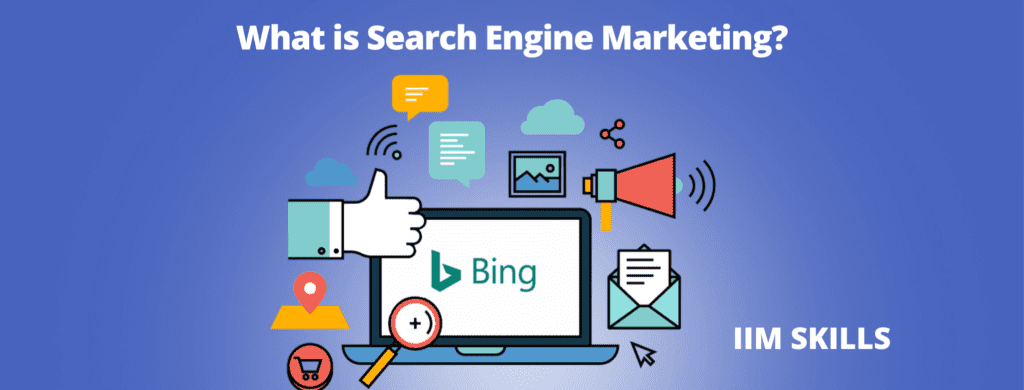
11. Search Engine Optimization (SEO Techniques): Search Engine Optimization (SEO) refers to a digital marketing technique that optimizes a website to improve its visibility and ranking in search engine results pages (SERPs) organically, without paid advertising. Here’s a brief overview of SEO techniques:
1. Keyword Research: Keyword research involves identifying relevant search terms and phrases that users are likely to use when searching for products, services, or information related to your business. Using tools like Google Keyword Planner, SEMrush, or Ahrefs, businesses can uncover high-volume, low-competition keywords to target in their SEO strategy.
2. On-Page Optimization: On-page optimization involves optimizing various elements on individual web pages to improve their relevance and visibility in search results. This includes optimizing meta titles, meta descriptions, headers (H1, H2, H3), URL structure, and image alt tags with target keywords. Additionally, creating high-quality, informative, and engaging content that satisfies user intent is crucial for on-page SEO.
3. Content Creation: Content is a cornerstone of SEO. Creating valuable, relevant, and high-quality content that addresses the needs, interests, and pain points of your target audience can help improve your website’s visibility and ranking in search results. This includes blog posts, articles, guides, videos, infographics, and other types of content optimized for target keywords and topics.
4. Link Building: Link building involves acquiring backlinks from other websites to your website. High-quality backlinks from reputable and authoritative websites signal to search engines that your website is trustworthy and valuable, thereby improving its ranking in search results. Strategies for link building include guest blogging, influencer outreach, content promotion, and directory submissions.
5. Technical SEO: Technical SEO focuses on optimizing the technical aspects of a website to improve its crawlability, indexability, and overall performance in search engines. This includes optimizing website speed and performance, fixing broken links, improving site structure and navigation, implementing schema markup, and ensuring mobile-friendliness and HTTPS security.
6. User Experience (UX) Optimization: Providing a seamless and positive user experience is essential for SEO. This includes optimizing website design, navigation, and usability to make it easy for users to find and access information. Fast loading times, intuitive navigation, mobile responsiveness, and clear calls-to-action (CTAs) contribute to improved user experience and can positively impact search rankings.
By implementing these SEO techniques effectively, businesses can enhance their online visibility, attract more organic traffic, and ultimately, achieve higher rankings in search engine results pages (SERPs), driving growth and success in the digital landscape.
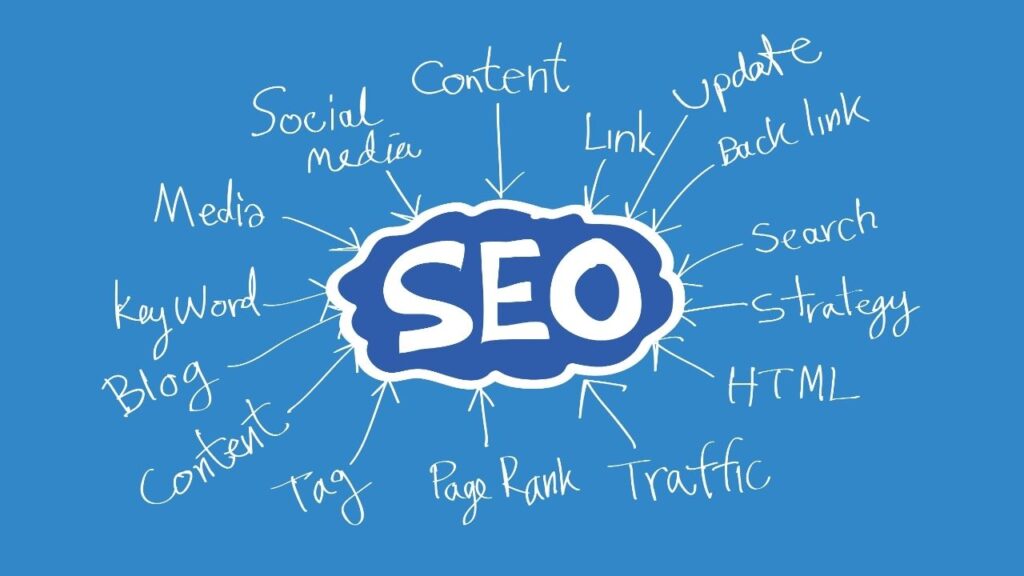
12. SMS Marketing (Bulk SMS Sending): SMS Marketing, also known as text message marketing or bulk SMS sending, is a digital marketing technique that involves businesses sending promotional messages, updates, or alerts to a large group of recipients via SMS (Short Message Service). Here’s a brief overview of how SMS marketing works:
1. Database Building: Businesses compile a list of phone numbers from customers who have opted in to receive SMS communications. This can be done through various channels such as online sign-up forms, in-store sign-up sheets, or by requesting permission during the checkout process.
2. Message Creation: Businesses craft concise and compelling messages to be sent to their SMS subscribers. These messages typically include promotional offers, product updates, event invitations, appointment reminders, or important alerts. It’s essential to keep messages short, relevant, and engaging to capture recipients’ attention.
3. Bulk SMS Sending: Using an SMS marketing platform or service provider, businesses send the messages to their subscriber list in bulk. The SMS platform allows businesses to upload their subscriber database, customize message content, schedule delivery times, and track delivery and engagement metrics.
4. Delivery and Response Tracking: After sending the messages, businesses monitor delivery status and track metrics such as open rates, click-through rates, and conversion rates. Some SMS marketing platforms offer real-time reporting and analytics to measure the effectiveness of campaigns and optimize future messaging strategies.
5. Compliance and Regulations: It’s crucial for businesses to comply with regulations such as the Telephone Consumer Protection Act (TCPA) in the United States and similar regulations in other countries. This includes obtaining explicit consent from recipients before sending commercial SMS messages, providing opt-out options, and ensuring compliance with spam laws and regulations.
SMS marketing offers businesses a direct and immediate way to reach their audience, with high open rates and engagement compared to other marketing channels. By delivering timely and relevant messages to subscribers’ mobile devices, businesses can drive sales, increase brand awareness, and foster customer loyalty effectively. However, it’s essential to respect subscribers’ preferences, adhere to regulations, and deliver value-added content to maintain the effectiveness and integrity of SMS marketing campaigns.
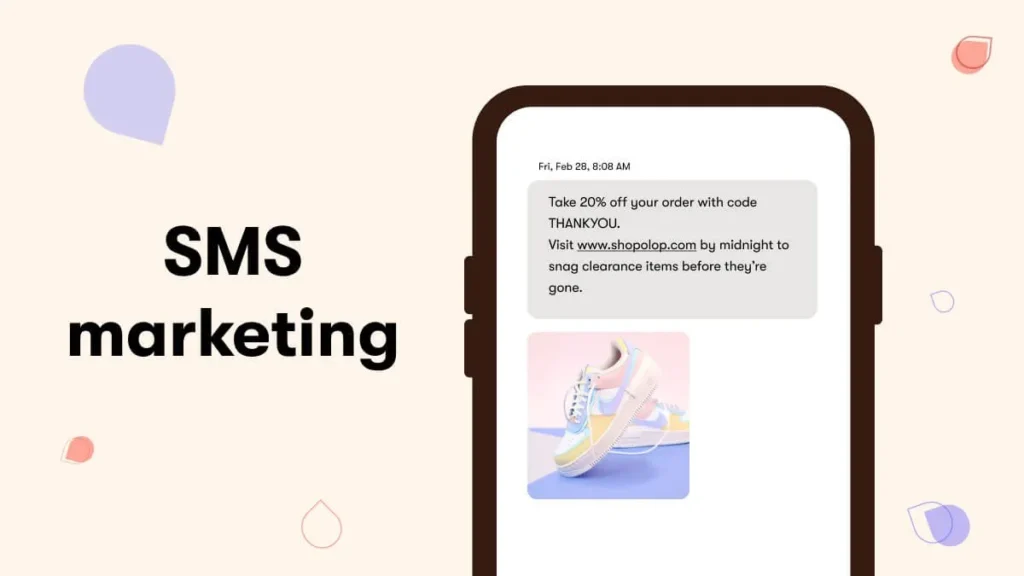
In conclusion, the digital marketing landscape offers a plethora of techniques and strategies to help businesses thrive in today’s competitive market. From email marketing to social media advertising, search engine optimization to influencer partnerships, and beyond, the possibilities are endless. By understanding the unique strengths and applications of each digital marketing technique discussed in this article, businesses can craft a comprehensive and effective marketing strategy tailored to their goals and audience.
Whether you’re looking to increase brand awareness, drive website traffic, generate leads, or boost sales, there’s a digital marketing technique suited to your needs. Embrace the power of digital marketing to connect with your audience, engage with customers, and elevate your brand to new heights in the digital age.
As the digital landscape continues to evolve, staying informed about emerging trends, leveraging new technologies, and adapting your strategies accordingly will be key to staying ahead of the curve. By embracing innovation, creativity, and a customer-centric approach, businesses can navigate the ever-changing digital terrain with confidence and achieve sustainable growth and success.
To obtain software and courses that could enhance your digital skills, visit techlover.com.ng
Or visit any of our online stores,
Originally posted 2024-03-20 08:22:43.



